We’ve discussed many of the strange things that Dutch people do, and we know that the Dutch have an odd habit of bringing their own boterhammen to work instead of taking a good long siesta. But we’ve never discussed precisely just how weird Dutch bread toppings are.
It seems each culture has its own way of veering from the normalcy of just ham or cheese on bread.
The Aussies have their Vegemite, the Americans have peanut butter and jelly, the Belgians have fries-filled sandwiches (obviously), and the Vietnamese are famous for their banh mi.
Of course, there are many more examples, but let’s get back to the real topic here: explaining why Dutch bread toppings are so exceptionally weird awesome.
1. Hagelslag
Let’s begin with a classic: hagelslag. Perhaps the greatest and most unique of all Dutch bread toppings, hagelslag is every child’s holy grail.
It hasn’t been scientifically confirmed yet, but this Dutch delicacy is the only (okay, so maybe not the only) reason that Dutch children are among the happiest in the world.
READ MORE | Snackbars in the Netherlands: the ultimate guide
The legendary status of hagelslag has spread across the world to solidify the opinion of the Dutch being straight-up crazy, but that’s based on the misconception that hagelslag is just chocolate sprinkles.
What people often don’t realize is that Dutchies have different types of hagelslag. And we mean a lot of different types.
Starting with traditional chocolate, hagelslag can vary from milk chocolate to dark to white. But we also have fruit hagelslag, forest fruit hagelslag, and anise hagelslag.
Not to mention that you can buy XXL varieties, mix-flavour packs, and the occasional limited edition packs — which we won’t go into because we wouldn’t want to get too crazy (although the coffee flavour is one that comes to mind).
2. Pindakaas (huge amounts of pindakaas)
So there’s nothing inherently strange about pindakaas, or peanut butter, as a Dutch bread topping… until you realise just how it’s treated. In particular, worship of the Calvé brand is a low-key religion.
The Dutch are among the largest consumers of peanut butter in the world and their daily intake of peanut butter is through the roof.
READ MORE | Dutch Quirk #12: Be obsessed with peanut butter
I could explain more, but frankly, I think a visual representation might be good here. While my childhood abroad means that I don’t have the same reliance on the creamy bread topping, below is a picture illustrating one year’s worth of peanut butter consumption by a close friend of mine.
He may be an extreme case, but it’s illustrative nonetheless.
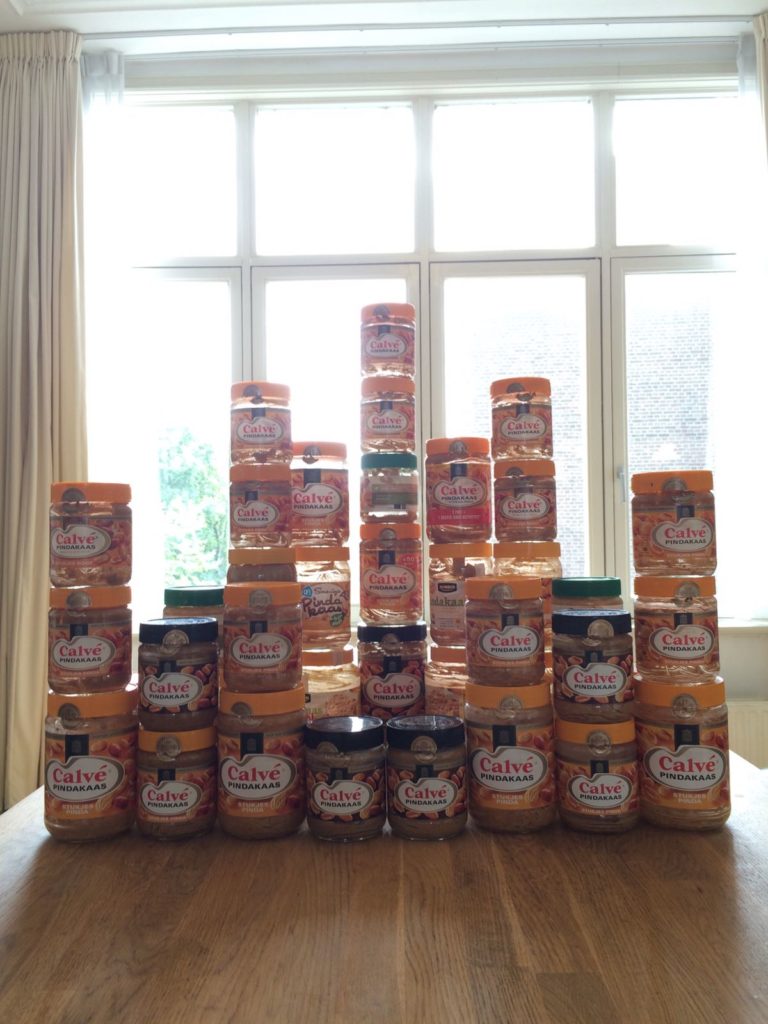
3. Muisjes
Muisjes literally translates to mice, and frankly, it’s one of the stranger additions to this list of Dutch bread toppings. Essentially they’re little balls of anise covered in a sugar coating.
Think of them like mini M&M’s, but with anise instead of chocolate on the inside. The sugar-coating is also significantly tougher.
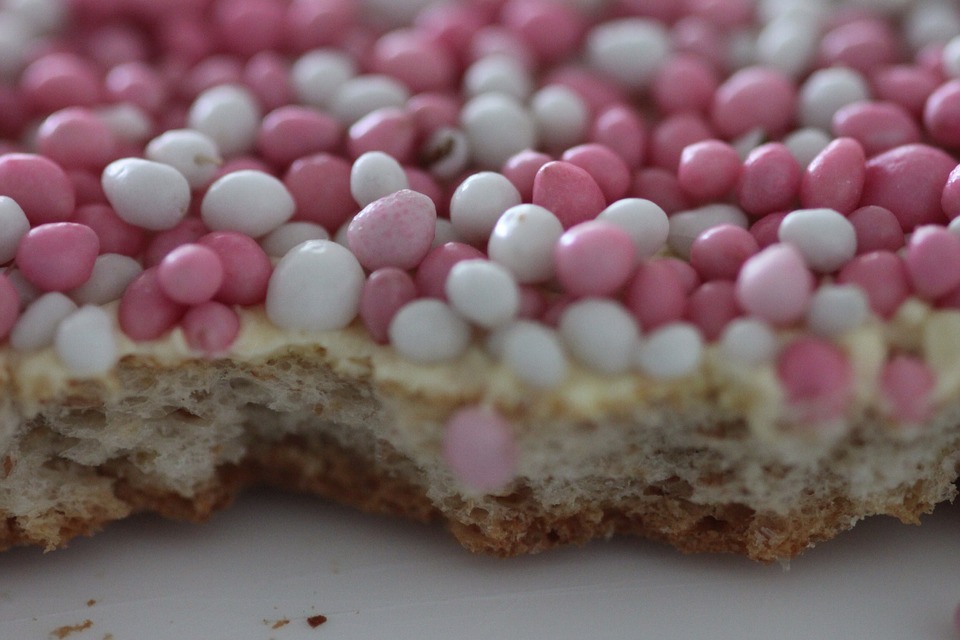
For the Dutch, though, this topping means more than just sugary goodness. Traditionally, when a baby is born, muisjes are presented on biscuits to baby visitors and distributed at work and school as ‘traktatie‘ (treat).
This has been happening as far back as the 17th century! For boys, this means blue and white muisjes, and for girls, it’s pink and white muisjes. Given the increasing acceptance of gender neutrality and fluidity, however, it’s not hard to wonder how long the current colour scheme will last.
4. Smeerkaas
As if the Dutch don’t have enough cheese, we’ve also decided to make it a spreadable paste. Why? Obviously, because then it’s easier to put on bread, and if we’re feeling lazy, we don’t have to deal with the whole kaasschaaf (cheese knife) nonsense.
Also, by making it into a creamy spreadable cheese, there’s a whole new flavour to it. (And if it isn’t clear yet, we love variety when it comes to our Dutch bread toppings.)
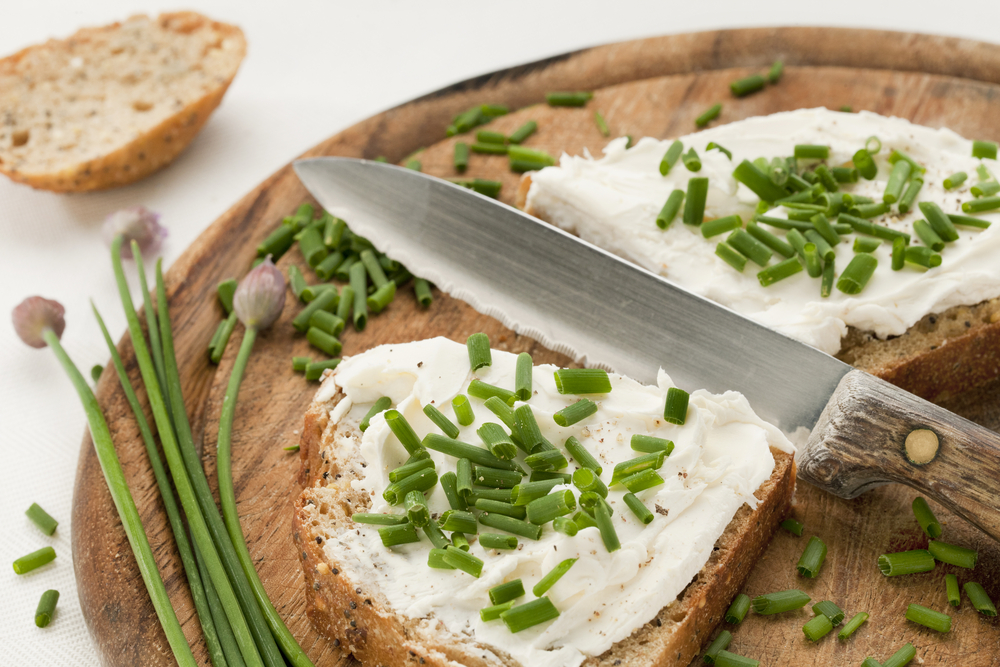
If you’re curious how it’s done, they just add emulsifying salts to melted cheese in order to maintain its spreadable consistency. We would go into more detail, but perhaps this isn’t the best place for a chemistry lesson…so on to the next topping!
5. Saté-salade (and 86 other weird salads that are really just mayonnaise)
When it comes to Dutch bread toppings, the Saté-salade represents so much more than just another bread topping.
First, nothing comes closer to looking like an actual sh*t-sandwich than this Dutch bread topping.
Second, the fact that after all that time “spent in Indonesia“, we’ve managed to pick up a culinary delight such as Saté sauce and skillfully make it into a weird-at-best-bread topping is the most Dutch thing ever.
READ MORE | Sandwich society: A guide to lunch in the Netherlands
Third, how the hell is this a salad? Most of the Saté-saladen you can get in your local Dutch supermarket are not in any way related to what the rest of the world (bar the US) calls a salad.
But yeah, we get why, for marketing reasons, you can’t call it “saté-mayonaise” (we hope it’s mayonnaise, but who knows what is really in there).
6. The great exception to weird Dutch bread toppings: kroket
The kroket is a strange food to list as a Dutch bread topping because it’s also frequently eaten as a standalone dish, but in true Dutch fashion, we decide to put it on our bread anyway.
There isn’t really much that compares to it (except for maybe bitterballen, but the kroket shape is just more convenient).
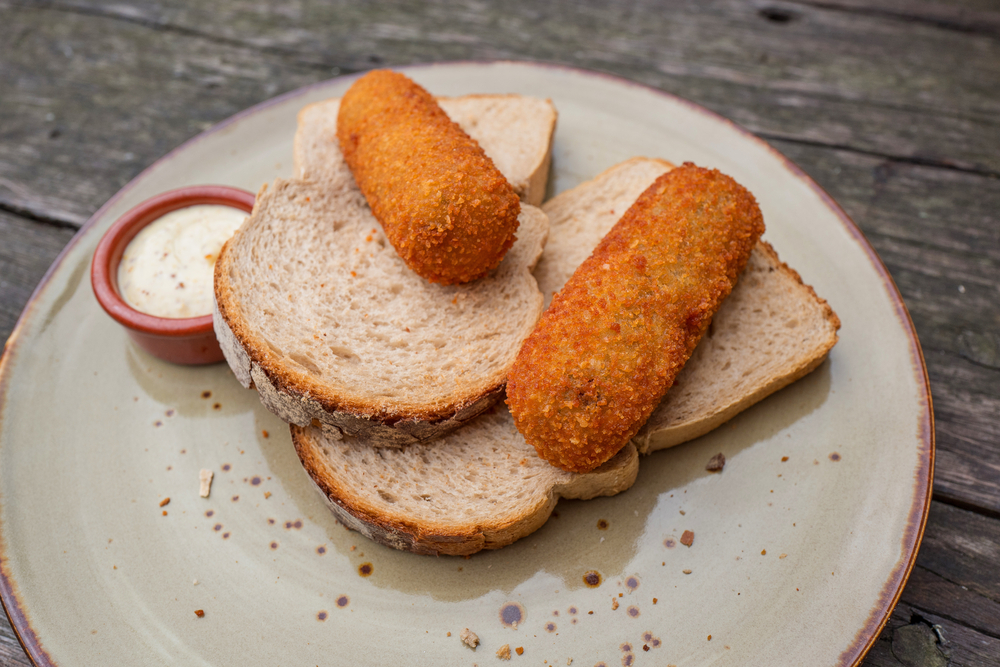
If you’ve never had kroket before, just imagine a delicious warm ragout covered in a crunchy layer of goodness. Now, if you have that in mind, just add mustard and a layer of soft white bread.
White bread is the go-to bread type for a kroket boterham (although my personal preference is a ciabatta). So, there you have it: kroket as a Dutch bread topping.
That’s it for now, but we’ll be back with more weird Dutch bread toppings to discuss! Think about Filet Americain, smeerworst, vlokken, huzarensalade, sandwich spread, and plenty of other disgusting/Dutch/delicious stuff to put on your boterham.
What’s your favourite guilty pleasure when it comes to strange Dutch bread spreads? Tell us in the comments below!



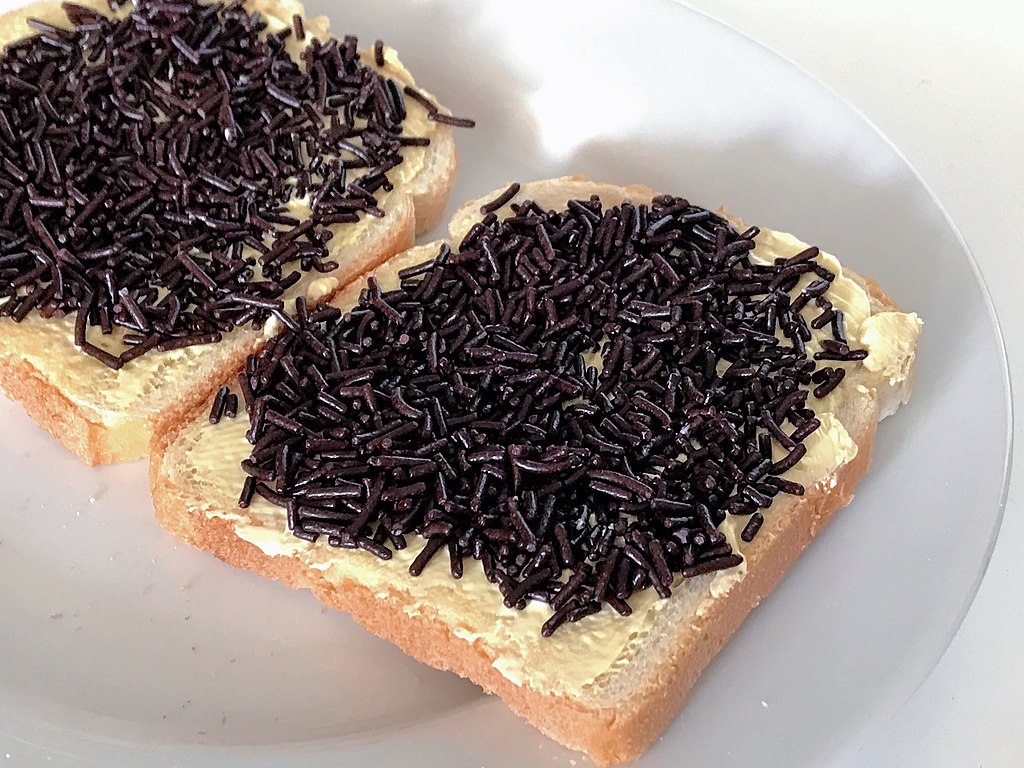


Must not forget speculaas and unox rookworst
Appelstroop, kokosbrood, babogeen, haring (op een bol), speculoospasta, schuddebuikjes
If you think muisjes are strange, what about our “gestampte muisjes” crushed little mice
?
(Appel)stroop (met een plak kaas)
Speculaas
Kokosbrood
Jam met kaas
Knakworsten
En zo zijn er vast veel meer 😛
Speculaaskoekjes, speculoos, sellerie-salade, kokosbrood, schuddebuikjes en gestampte muisjes. Yumyum!
Rolmops, gebraden gehakt, frikandel, theeworst, peperkoek…
Piccalilly! So glad I have a Dutch store nearby in Dallas,TX!
Route haring met rauwe cities in een wit punt broodje
Sorry for the spellcheckers errors…zoute haring….Rouwe uitjes.
Love your name My Father was a Baker once a week he would make a variety of taartjes which required a variety of icings off course there was always leftovers so we would eat boterhammen topped with the icings the only friends I had were those who wanted to come over to our house for a meal when this was being served ………it took me some time to understand this….Neil Toronto
I am Australian born with Dutch heritage – my parents came to Australia early ‘50s.
Every single morning, except Sundays, I eat one slice of toasted bread, cut into 3 pieces. They are prepared and eaten in a specific order from most savoury to sweetest, like a miniature 3 course meal, and reflect my upbringing and heritage completely.
On the first piece – Vegemite (I don’t know how my Dutch mother first learned about this, but I had a photo taken at about 3 years of age with Vegemite smeared around my mouth, like any other ‘dinkum’ Aussie kid).
On the 2nd piece – Pindakaas, as we referred to it at home when I was young (peanut paste as I still call it, although ‘peanut butter’ has taken over as the usual name here now)
On the 3rd piece – you can probably guess – Hagelslag of course, preferably dark, but like to mix it up (With a French wife, this complements our Sunday morning ‘pain au chocolat’ and croissant perfectly !)
For some reason friends find this all quite amusing, or is that bemusing ?
My mother came out to Australia in 1950. As you would know as an Aussie, Fairy bread is (or was) common with kids parties in Australia. Bread, butter and hundreds and thousands (or sprinkles as most would know them) to make it colourful and sweet. Bread with basically sugar or chocolate on it is going to be a hit with kids almost everywhere as a treat. The only thing that didn’t pass down from my Dutch side was a love for aniseed/licorice. I would always pass the licorice from the mixed bag of sweets to my Mum, who loves licorice – especially the double salted stuff.
Your choice of 3 could be considered a multicultural breakfast! I suppose most people would just have one per day i.e. Vegemite one day, Peanut Butter the next etc.
‘Given the increasing acceptance of gender neutrality and fluidity, however, it’s not hard to wonder how long the current colour scheme will last.’ Yes I’m very much afraid of this
Rauwe haring met uitjes ……….. heerlijk!!
You did not mention “Rinze Appelstroop” å thick, dark, sweet-sour apple sirup. Lekker!